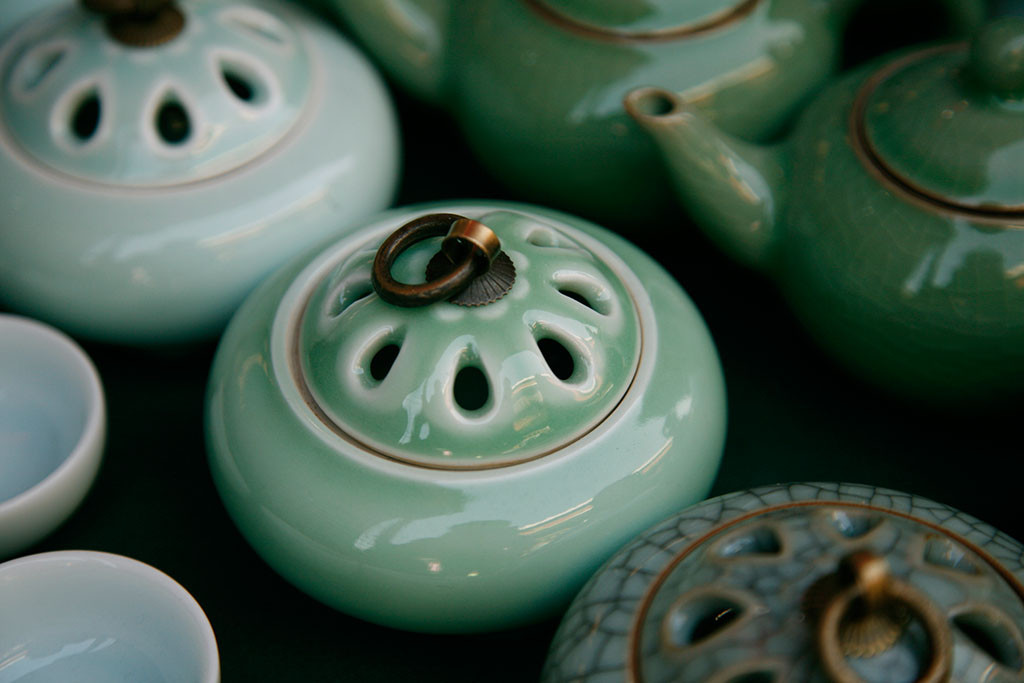"Zhejiang Cultural Imprints" is a series of introductory articles introducing some of the most influential cultural heritages and cultural imprints in Zhejiang province. Today, we will talk about the celadon, a type of green-glazed Chinese ceramic.

(Photo: Longquan celadon, via tourzj.com)
Zhejiang is not only the origin of porcelain but also the place where primitive celadon evolved into mature porcelain. It played a leading role in the development of Chinese celadon.
The appearance of primitive celadon in the Zhejiang region was a result of the fusion of the civilization of the Central Plains and the native civilization of Yue, confirmed by the early primitive celadon represented by the ritual vessels unearthed at Huangfendui in Deqing. The appearance of a large number of ritual vessels and musical instruments made of primitive porcelain with elements of Yue culture during the Spring and Autumn period indicates the dominance of that culture in the southeast of China at the time.
Since the Han dynasty, the porcelain industry of Zhejiang was developed successively at the kilns at Yue, Ou, Deqing and Wuzhou, the Southern Song government kiln, and the Longquan Kiln. Relics of the industry obtained during the survey of kiln sites or archaeological excavation over the years include innumerable masterpieces. For instance, the Yuan boat-shaped celadon yandi (small cup for adding water to an inkstone) made at the Longquan Kiln, was found at a kiln site. The excavation of ancient tombs is one of the primary sources of the porcelain collection. The Yue Kiln celadon unearthed from a tomb dating to the 8th year of Taikang (ad 287) during the Western Jin dynasty, the Deqing Kiln black-glazed porcelain unearthed from a tomb dating from the 2nd year of Xingning during the Western Jin dynasty (ad 364), and the Yue Kiln mise (secret-color) porcelain and the Ding Kiln white porcelain unearthed from the cemetery of Qian Chu, of Wuyue, rarities in their own right, provide invaluable primary data for today’s research into the political and economic landscapes as well as the folk customs of that age.
Longquan Celadon
Archaeologists have unearthed Longquan celadon from the Song (960–1279), Yuan (1279–1368), and Ming (1368-1644) dynasties throughout China. Quantities of celadon have also been discovered at digs and shipwrecks along with the historic land and maritime trade-routes in countries such as Vietnam, Thailand, Indonesia, Malaysia, Singapore, the Philippines, India, Egypt, Kenya, Iran, the United Arab Emirates, North Korea, South Korea, Japan, and other countries and regions. These finds are evidence of the use of celadon as commercial products and imperial gifts in the history of trade and international diplomacy. Discoveries at shipwrecks, ports, courier stations, and along transit routes show the importance of celadon in the expansive network of domestic and international trade routes.
As the domestic and international demand for celadon increased, kilns in Fujian and Guangzhou produced immense quantities of the ceramic product. From the twelfth to twentieth centuries, kilns in present-day Vietnam, Thailand, Myanmar, Iran, Egypt, Syria, Turkey, Japan, the United Kingdom, and other countries produced a range of wares in the celadon tradition. In this way, the production of celadon reached a sort of cultural consensus and, as such, became an example of the outstanding culture of China and its role in shaping global prosperity. This worldwide expansion may, thus, be genuinely recognized as a boundless "Longquan of the world" (Tianxi Longquan).
From the twelfth century to the current age, celadon has been enjoyed by people throughout China and around the world in palace courts and common residences. Longquan celadon from the mountainous region of western Zhejiang became a symbol of fashion, cultural distinctiveness, and global exchange.